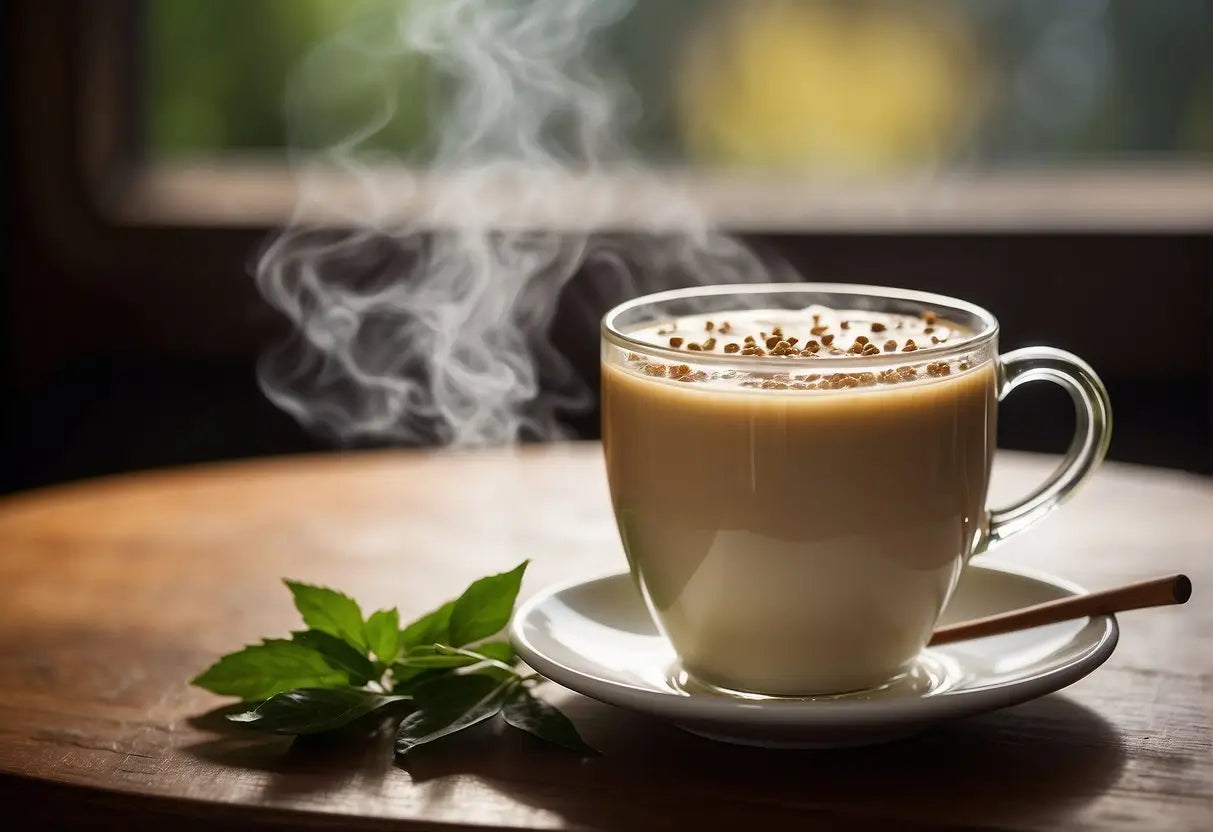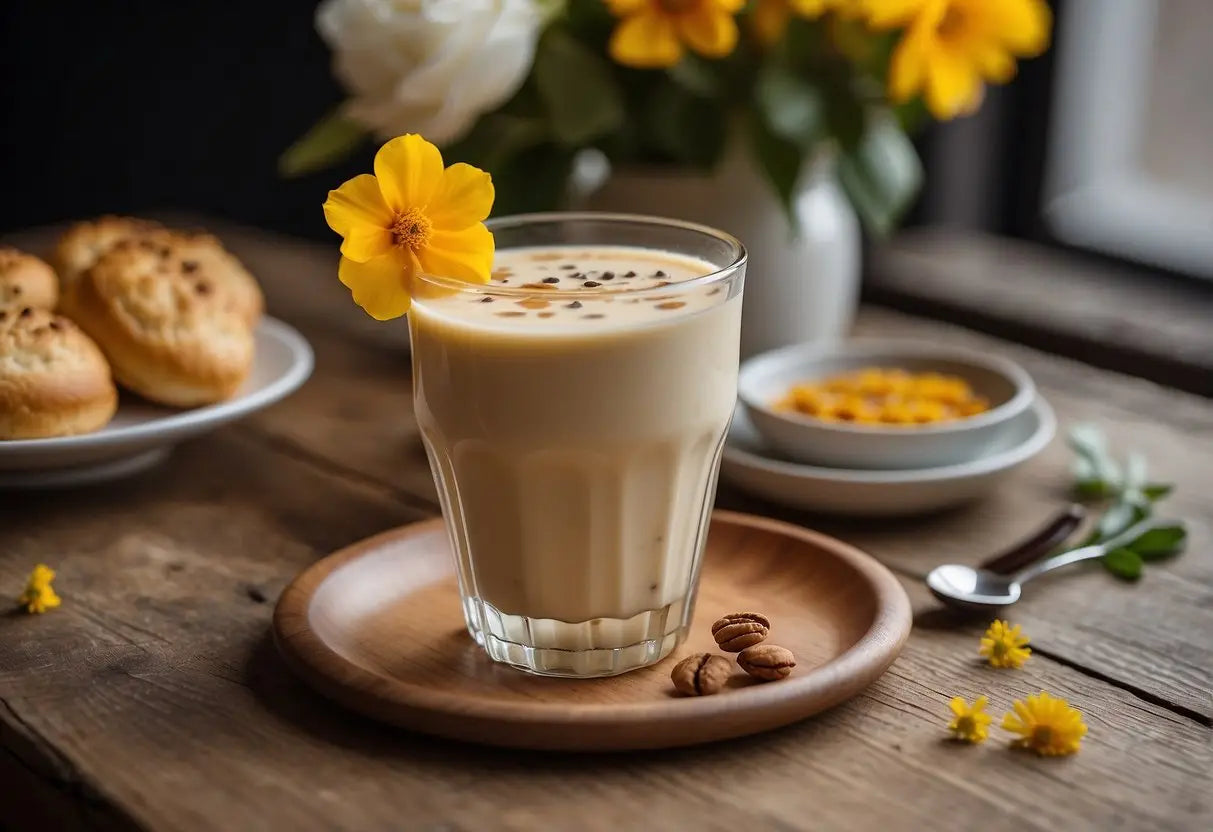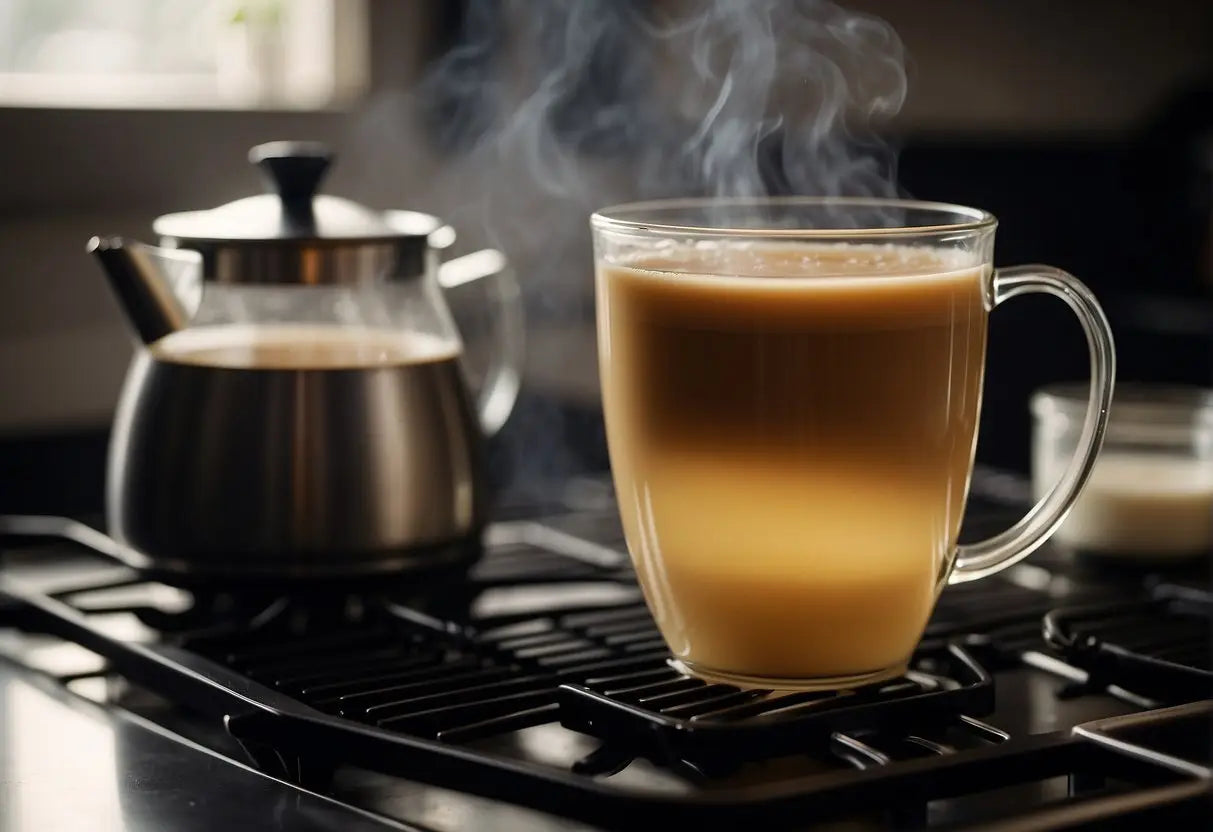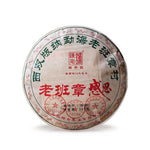Hokkaido Milk Tea
Hokkaido milk tea, known in Japan as Nidanshi Milk, originates from Hokkaido, the second largest island of Japan. This region is renowned for its quality dairy products due to the verdant pastures and cooler climate, ideal for dairy farming. The tea is a testament to the local produce, boasting a rich taste and creamy texture.
Key Components:
- Hokkaido Milk: The star ingredient, it's much richer and creamier than regular milk.
- Black Tea: Typically, a robust blend such as Assam is used as the base.
- Sweeteners: Options include honey or 'wasanbon' sugar, a fine-grained Japanese sugar.
Brewing Tradition:
Bestsellers
- The black tea leaves are steeped in hot water.
- The milk from Hokkaido cows is then added to the brew.
- A sweetener is mixed in to enhance the flavor.
This tea is not merely a beverage but also a representation of Hokkaido's dairy heritage. It entered the market when local tea shops started searching for ways to highlight regional products. By the late 20th century, Hokkaido milk tea gained popularity and became a favorite among tea enthusiasts, both in Japan and internationally. Today, your experience of Japanese tea is incomplete without tasting this creamy delight that bears the essence of Hokkaido's rich dairy farms.
Ingredients

Crafting Hokkaido milk tea involves a blend of high-quality ingredients, each lending its unique flavor and richness to create the beverage's signature taste.
Hokkaido Milk
Hokkaido milk is the key ingredient that gives this tea its creamy texture. Produced in Hokkaido, Japan's northernmost island, this milk is renowned for its sweetness and full-bodied taste due to the region's unique terroir and the diet of the cows.
- Source of Milk: Hokkaido, Japan
-
Characteristics:
- Sweetness: Naturally sweeter than other milks
- Texture: Creamy and rich
Tea Leaves
The type of tea leaves used is critical in achieving the authentic flavor of Hokkaido milk tea.
-
Common Varieties Used:
- Assam: Provides a strong, malty flavor.
- Darjeeling: Offers a lighter, aromatic experience.
Sweeteners
Sweeteners add a desired level of sweetness that complements the creamy texture of Hokkaido milk.
-
Examples:
- Honey: For a natural and earthy sweetness.
- Brown Sugar: Adds a caramel-like richness.
Additional Flavors
To enhance the taste and create variations, additional flavors can be incorporated.
-
Optional Add-ins:
- Vanilla Extract: A dash for a sweet, floral note.
- Almond Flavoring: A hint for a nutty depth.
Preparation Method
To prepare Hokkaido milk tea, you'll need the following ingredients:
- Black tea leaves: 2 tablespoons
- Water: 1 cup (250 ml)
- Hokkaido milk (or a high-fat content milk): 1 cup (250 ml)
- Sugar: to taste (optional)
Steps:
1. Brew the Tea
Start by boiling water. Once it reaches a rolling boil, add the black tea leaves. Lower the heat and let it simmer for about 3 minutes. This process extracts the deep flavors from the tea leaves.
2. Strain and Mix
Remove the tea from heat and strain to remove loose leaves. Add sugar if desired and stir well until fully dissolved.
3. Heat the Milk
In a separate saucepan, gently heat the milk until it's warm but not boiling. This is to preserve the milk's creamy texture and prevent a skin from forming on the surface.
4. Combine and Froth
Pour the warm milk into the tea and stir. If you have a milk frother, use it to froth the milk to create a velvety texture, which is characteristic of Hokkaido milk tea.
Serve Immediately
5. Pour the tea into a cup ensuring a nice balance between tea and milk. The Hokkaido milk tea is best enjoyed fresh and warm.
Optional: Garnish with a sprinkle of matcha powder or a drizzle of caramel for an extra layer of flavor.
Cultural Significance
Hokkaido milk tea, known in your local cafes as Hokkaido Chai, holds a treasured spot in Japan's tea culture. Originating from Japan's northernmost island, Hokkaido, this beverage is more than just a drink; it's a reflection of the region's dairy farming prowess.
Lao Ban Zhang
Your experience with Hokkaido milk tea isn't merely about taste; it's inherently tied to the island's identity. The local people take pride in their high-quality milk, which is creamier due to the cooler climate and lush pastures. This has led to Hokkaido milk becoming an iconic ingredient, not only in tea but across various culinary delights.
In social settings, Hokkaido milk tea often becomes a conversational centerpiece. Whether you're in a cozy Sapporo cafe or attending a tea ceremony, this beverage serves as a bridge that connects you with Hokkaido's traditions. It's a manifestation of Japanese precision in crafting delicate flavors and a homage to the local farmers' dedication.
Moreover, its significance extends to festivals and regional events where it honors the heritage and contributes to local tourism. When you sip on Hokkaido milk tea, remember that you're partaking in a cultural staple that celebrates the harmony between nature's bounty and artisanal skill.
Health Benefits and Concerns

When you enjoy a cup of Hokkaido milk tea, you're not just treating yourself to a rich, creamy flavor; you may also be receiving certain health benefits. Here’s a balanced look at what you might gain and what to be cautious about:
Health Benefits:
- Antioxidants: Tea leaves contain antioxidants such as catechins, which can help in fighting off free radicals and reducing oxidative stress.
- Mental Alertness: The caffeine in the tea can boost your mental alertness and concentration.
- Bone Health: The milk provides calcium, which is essential for strong bones and teeth.
Concerns:
-
Calorie Content: Due to the addition of milk and potentially sugar, Hokkaido milk tea can be high in calories.
Component Estimated Calories Plain Tea < 5 Milk (1 cup) 80 - 150 Sugar (1 tbsp) 48 -
Caffeine Intake: Monitor your caffeine consumption, as excessive intake may lead to nervousness, restlessness, and trouble sleeping.
-
Sugar Content: If you add sugar, be mindful of your intake as excessive sugar can lead to dental issues and other health problems.
Note: Your individual health conditions and dietary needs will determine if Hokkaido milk tea is a good choice for you. Moderation is key.
Variations of Hokkaido Milk Tea

Hokkaido milk tea, known for its creamy texture and rich flavor, comes in various forms to suit your taste and mood.
Hot and Cold Versions
Hot Hokkaido Milk Tea: Enjoyed traditionally, this hot version allows the flavors of the black tea and the creamy Hokkaido milk to meld together, providing a comforting warmth.
Cold Hokkaido Milk Tea: Ideal for warmer days, the cold version is served with ice, offering a refreshing take on the classic drink without compromising its distinctly creamy taste.
Toppings and Mix-ins
Toppings:
- Boba: Chewy tapioca pearls add a fun texture.
- Jelly: Assorted jelly pieces present a subtle sweetness.
Mix-ins:
- Matcha Powder: Provides an earthy undertone and vibrant green color.
- Cocoa: Adds a chocolate twist for a bolder flavor profile.
Global Popularity

Hokkaido milk tea, originating from the northern Japanese region of Hokkaido, is renowned for its rich flavor derived from premium quality milk. This beverage has garnered widespread recognition internationally, with its presence established in various continents.
Asia: In its home continent, you'll find that Hokkaido milk tea has a solid reputation, especially in East and Southeast Asia. Countries such as China, South Korea, and the Philippines often have cafes dedicated to serving Japanese tea varieties, including this creamy delight.
-
North America: The United States and Canada have seen a consistent rise in the popularity of Hokkaido milk tea. It is frequently featured on the menus of Japanese-themed tea shops and has inspired local adaptations.
-
Europe: European countries, particularly in the UK, have embraced the tea as part of the burgeoning bubble tea market. Its charm has captivated the taste preferences of Europeans seeking a velvety-smooth, authentic Eastern brew.
Table Highlighting Global Outlets
| Continent | Notable Cities with Hokkaido Milk Tea Outlets |
|---|---|
| Asia | Tokyo, Seoul, Manila |
| North America | New York, Toronto |
| Europe | London, Paris |
Your discovery of Hokkaido milk tea will be supported by social media trends and food bloggers, showcasing its integration into global cafe culture. The combination of specialty Hokkaido milk, unique tea blends, and diverse serving methods maintains its reputation as a premium beverage choice.
Serving and Presentation

When serving Hokkaido milk tea, presentation is key to enhancing the experience. It is traditionally served in a clear glass to showcase the rich, creamy color of the tea. Your glass should be preheated to ensure your tea stays warm. Follow this simple guide:
- Preheat your glass by rinsing it with hot water.
- Fill the glass to about three-quarters with freshly brewed tea.
- Gently add the Hokkaido milk to preserve the layering.
- If sweetness is desired, stir in sugar or honey.
For an added touch of elegance, consider using a long-stemmed spoon for stirring. A sprig of mint or a light dusting of matcha powder can be used as garnish for a hint of sophistication.
| Element | Suggestion |
|---|---|
| Glass Type | Clear, heat-resistant |
| Serving Temperature | Warm (preheat glass) |
| Milk Layering | Gently pour to maintain a distinct layer |
| Sweetener | Sugar, Honey (optional and to taste) |
| Garnish | Mint sprig, Matcha dust (optional) |
Serve immediately after preparation to enjoy the soothing warmth and creamy texture. Remember, you don't need to rush—the preparation itself is part of the charm of Hokkaido milk tea.
Pairing with Foods

When enjoying Hokkaido milk tea, certain foods can enhance your experience. Consider pairing it with:
- Pastries: The creamy sweetness of Hokkaido milk tea complements the flaky texture and buttery taste of pastries. Croissants and Danish pastries are especially suitable.
- Desserts: Balance the richness of the tea with light desserts. For example, pair it with a slice of lemon cake or fruit tarts.
A structured approach to food pairing involves considering:
| Food Type | Recommended Pairing |
|---|---|
| Savory Snacks | Mild cheese crackers or lightly salted pretzels |
| Sweet Snacks | Rice cakes or honey-glazed nuts |
| Break Time | Biscotti or shortbread cookies |
| Meal Time | A side for sandwiches with egg, tuna, or salmon |
Remember to pair your tea with foods that won't overpower its distinctive flavor. Delicate flavors complement the tea rather than compete with it. For instance:
- Cheese: Soft cheeses, such as Brie or Camembert, offer a subtle flavor.
- Chocolates: Choose white or milk chocolate for a harmonious blend with the tea's creaminess.
Your palate will thank you for pairing your Hokkaido milk tea with foods that respect and highlight its unique taste. Enjoy the delectable symphony of flavors in each pairing.
Buying Hokkaido Milk Tea
When purchasing Hokkaido milk tea, you have several options. Explore purchasing pre-made bottles, loose tea leaves for brewing, or instant powder mixes. Here's how you can buy each type:
Pre-Made Bottles
- Locations: Specialty stores, Asian supermarkets, online retailers
- Brands: Look for Japanese or Asian brands for authenticity.
- Price Range: Varies depending on import costs and brand recognition.
Loose Tea Leaves
- Quality: Select high-grade black tea leaves.
- Flavor: Ensure it has a creamy flavor profile typical of Hokkaido milk.
- Sourcing: Japanese tea brands or tea shops.
Powder Mixes
- Convenience: Excellent for quick preparation.
- Ingredients: Check for milk from Hokkaido for authenticity.
- Preparation: Just add hot water and stir well.
Considerations:
- Sweetness: Adjust sugar levels to your taste.
- Authenticity: Genuine Hokkaido milk tea uses milk from Hokkaido, which contributes to a richer flavor.
- Packaging: Be eco-conscious. Look for recyclable or minimal packaging when possible.
Tip: Read online reviews and check ratings before purchasing, to ensure a satisfying experience with the product you choose.
Making Hokkaido Milk Tea at Home

Hokkaido milk tea, known for its rich and creamy flavor, originates from Hokkaido, Japan. This tea is distinguished by its use of high-quality milk from the region. To create your own Hokkaido milk tea, you will need black tea leaves, Hokkaido milk (or a high-quality whole milk alternative), and a sweetener such as honey or sugar.
Ingredients:
- Black tea leaves (2 teaspoons or 1 teabag)
- Water (1 cup)
- Hokkaido milk (¾ cup)
- Sweetener (sugar/honey to taste)
Directions:
- Brew the black tea: Boil water and pour it over the black tea leaves. Steep for about 3-5 minutes.
- Heat the milk: While the tea is steeping, gently heat the milk in a saucepan until it is warm, but not boiling.
- Sweeten your tea: Add your preferred sweetener to the brewed tea and stir until dissolved.
- Combine milk and tea: Pour the warm milk into the sweetened tea and stir well.
- Optional: Froth the top of the milk before adding it to the tea for a luxurious texture.
- Serve immediately: Pour your Hokkaido milk tea into a cup and enjoy the comfort of a classic Japanese beverage.
Note: You may adjust the sweetness and the strength of the tea according to your taste. For an authentic touch, use caramelized brown sugar as a sweetener. Enjoy crafting this delightful tea at home for a taste of Hokkaido’s finest.
Marketing and Branding Strategies

When approaching the marketing and branding of Hokkaido milk tea, it's important for your strategy to highlight its unique selling points.
Product Differentiation: Your branding should emphasize the premium quality of the ingredients, such as the rich, creamy milk sourced from Hokkaido. Use imagery and language that convey the tea's luxury and authenticity.
-
Visual Identity:
- Logo: Design a sleek, easily recognizable logo.
- Packaging: Use soothing colors and imagery that invoke tranquility and quality.
- Typography: Choose modern fonts that reflect sophistication.
Online Presence: Strengthen your digital footprint.
- Website and SEO: Develop a user-friendly website with strong SEO practices to attract organic traffic.
- Social Media: Engage with your audience on platforms such as Instagram and Twitter using appealing visuals and interactive content.
| Platform | Content Type | Posting Frequency |
|---|---|---|
| High-Quality Images, Stories | 3-4 times per week | |
| Promotions, Customer Service | Daily | |
| Events, Community Engagement | 2-3 times per week |
Collaborations: Partner with influencers and Japanese culture enthusiasts to showcase your tea's authentic flavor.
- Influencer Marketing: Target food bloggers or influencers in the beverage segment for reviews or sponsored content.
Promotions: Use strategic promotions to introduce new customers to Hokkaido milk tea.
- Limited-Time Offers: Create urgency with time-sensitive discounts.
- Loyalty Programs: Reward repeat customers to encourage brand loyalty.
Focus on crafting a brand experience that resonates with the rich heritage and distinctive taste of Hokkaido milk tea. Through consistent messaging and appealing visuals, you can establish a strong brand that stands out in the marketplace.
← Older post Newer post →











